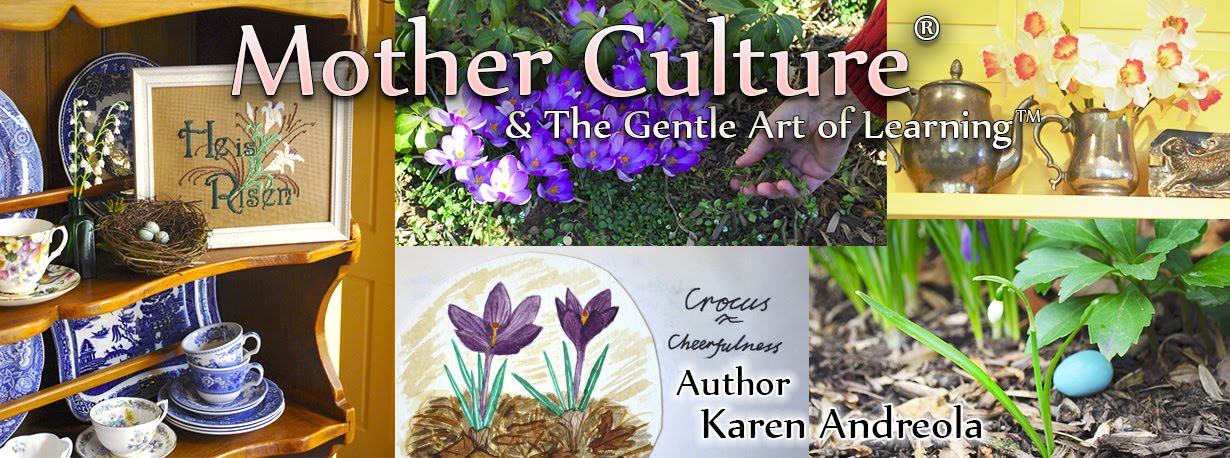
I'm squirreling away gifts into the Christmas-Closet and knitting mittens.
A small pile of books is forming. I noticed something they share in common. They recall true events. What a strange coincidence. I'm guessing that if an adult finds the events interesting, a child would, too.
People of all ages enjoy (and can learn something) from a well-written picture-book.
Out of the Woods - A True Story of an Unforgettable Event
This gentle story was handed down by the author's grandfather. An old photograph of him as a boy is in the "Author's Note" - surrounded by the mittens I made for my 3 grandchildren.
 |
| The author's grandfather. Mittens for my grandchildren. |
 |
| Pages inside "Out of the Woods" |
 |
 |
| Pages inside "Mailing May" |

Just before sitting down to write about The Matchlock Gun
Society thinks differently than it did in 1942. Therefore, when the news reached my ears it seconded my suspicions. Today, general opinion seems to be that guns are bad.
To those, however, who believe in the right to self-defense, the 2nd amendment of the U.S. Constitution, and small government, guns are not bad. It is violent people and big, tyrannical governments that are bad.
The news? Yale University decided to cover up an offensive musket held by a Puritan. (I googled. A group of 500 Puritans founded Yale in 1638.) In this carved stone relief on the outside of the Yale library, the musket is pointing in the direction of an Indian. The arrow, grasped in the Indian's hand, pointing toward the Puritan, is not covered up. Clay was used to cover-up the musket. This way future generations might find it (and see how far we've progressed to becoming a gun-free, 2nd-amendment-free society?)
 |
| Pages inside "The Matchlock Gun" Antique doll quilt |
His mother is being chased up the hill and to the door of their cabin by an attacking Indian. Edward, in the kitchen, stands behind his grandfather's heavy antique Spanish gun (that is propped up on the table). He has one shot.
He fires just as the Indian strikes his mother in the shoulder with a tomahawk. Mother is wounded. The Indian dies. The boy saves his mother's life. (No red blood is depicted.) (Pub. 1941)
The author's story was handed down to him as part of his personal family heritage.
 |
| This rooster pin-cushion has wings. Missouri Star Quilt Co. has a chicken pin cushion tutorial. |
 |
| Dean and I went bonkers at this enormous used-book sale this summer. |
A recipe for Thunder Cake, a chocolate tomato layer cake, is found in on a back page. 15 years ago, after being intrigued by a muffin recipe in Joy of Cooking, with the "secret ingredient" of tomato, I made a dozen. They were good. Therefore, it wouldn't surprise me if Thunder Cake was tasty, too. (Pub. 1990) I picked up a used copy.
 |
| Our herb garden around the back patio |
Post Script
Zucchini
 |
| Zucchini burgers with garden herbs smell delicious while cooking. |
When summer brings zucchini, I make vegetarian burgers. A gluten-free, bell pepper-free batch for the Man-of-the-House. A batch with "the works" for me includes finely grated carrot. Yum.
A generous helping of minced herbs from the patio garden add flavor: chive, oregano, sweet basil, thyme, parsley. I cook the burgers in butter and olive oil until brown and crispy on the outside, but creamy-soft inside.
The parsley is store-bought. (Can you see why?) Peter Rabbit lives in the back yard. Benjamin Bunny lives in the front yard. They love parsley. And leave none for us. Dean noticed that finicky Peter won't touch the Italian herbs. "I wonder if the rabbits in Italy have acquired a taste for them," I said "I hope our rabbits never do."
The Doll Quilt
The little blue-and-yellow quilt is an antique doll quilt presented to me by a family we invited for lasagna dinner. It was a sweet and thoughtful surprise. At close inspection I see it was a young girl who hand quilted it because the quilting stitches are wobbly. Cute. I wonder what her doll looked like.
The Mennonite Historical Society raises money each year with this enormous used-book sale out on their lawn. Some of the books fit under a tent. We found armfuls of gems.
Books reviewed are linked to Amazon.
Happy Reading,
Karen Andreola
(karenjandreola(at)gmail(dot)com
Typing-in my e-mail reduces spam. Thank you.
 |
| Tiny oregano flowers fill-out my little bouquet nicely. |












